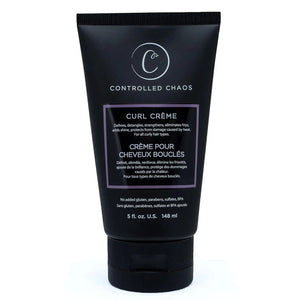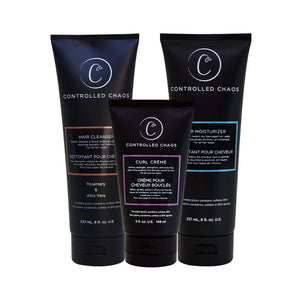

The age-old debate of straight vs wavy hair is not a question of superiority but of preference, individuality, and care needs. Both hair types have unique characteristics that make them special. In this blog, we will understand their strengths, challenges, and styling possibilities that can help you decide which best suits your personality.
Understanding Straight Hair
Straight hair is characterized by its smooth texture. It allows natural oils to travel down the hair shaft easily. This results in a naturally shiny and sleek appearance. Here are some key features:
-
Pros:
- Low Maintenance: Straight hair requires less detangling and is less prone to knots.
- Effortless Shine: Its structure reflects light easily, creating a glossy look.
- Versatile Styling: It’s a perfect canvas for different styles, from ponytails to sleek buns.
-
Cons:
- Lack of Volume: Straight hair can sometimes appear flat and limp.
- Oiliness: Natural oils can make straight hair greasy faster, requiring more frequent washing.
- Limited Texture: Achieving waves or curls often requires heat tools or products.
Wavy Hair
Wavy hair falls between straight and curly, with an S-shaped pattern that varies in intensity. It’s celebrated for its natural texture and versatility. Key features include:
-
Pros:
- Natural Volume: Wavy hair tends to have more body and lift than straight hair.
- Textured Look: Effortlessly tousled waves give a stylish and laid-back vibe.
- Flexible Styling: It can be easily straightened or curled, offering diverse styling options.
-
Cons:
- Frizz-Prone: Wavy hair is more susceptible to humidity-induced frizz.
- Detangling Needs: It may require more effort to keep it knot-free than straight hair.
- Moisture Balance: Wavy hair needs hydration to maintain its shape without becoming oily.
Now that you have understood the difference between Straight and wavy hair care, it is time to decide on a hair care routine for each.
Care Routines
To maintain the health and beauty of straight or wavy hair, specific care routines are essential:
-
Straight Hair:
- Use lightweight shampoos to avoid buildup and keep hair fresh.
- Opt for volumizing products to add lift at the roots.
- Avoid overloading with heavy conditioners or oils, which can weigh it down.
-
Wavy Hair:
- Use hydrating shampoos and conditioners to maintain moisture.
- Incorporate leave-in conditioners or curl-enhancing products to define waves.
- Avoid brushing dry hair; use a wide-tooth comb when it’s wet to prevent frizz.
Styling Possibilities
Both straight and wavy hair offer endless styling options, but they shine in different ways:
- Straight Hair Styles: Sleek ponytails, blunt cuts, and smooth consecutive looks dominate for a polished appearance.
- Wavy Hair Styles: Beachy waves, textured bobs, and layered cuts enhance the natural movement of waves.
Which is Better for You?
Ultimately, neither straight nor wavy hair is objectively better—it depends on personal preference and lifestyle. Straight hair is ideal for those who value simplicity and a sleek aesthetic, while wavy hair suits individuals who embrace texture and natural volume.
Factors That Influence Hair Preferences
Your preference for straight or wavy hair might be influenced by several factors, from cultural trends to personal experiences. Let’s explore some of the common considerations:
- Lifestyle Needs:
- If you have a busy lifestyle and prefer a quick morning routine, straight hair might feel more manageable as it requires less maintenance and styling effort.
- While versatile, wavy hair may require more attention to avoid frizz and enhance its natural texture, which could take a bit more time.
- Climate and Environment:
- Straight hair thrives in drier climates with low humidity, reducing the risk of it becoming limp or oily.
- Wavy hair can hold up well in moderate climates but may struggle with frizz and dryness in high humidity, necessitating specialized products.
- Cultural Influences:
- In certain cultures, straight hair has been traditionally associated with formality and professionalism.
- On the other hand, wavy hair is often linked with a carefree, bohemian lifestyle, making it popular in casual or artistic settings.
- Trends and Media:
- Fashion trends and celebrity influences often dictate the popularity of hair types. For example, beach waves have become a staple in modern beauty standards, elevating the appeal of wavy hair.
The Role of Hair Products:
Whether your hair is straight or wavy, the right products can transform your hair care experience. Here’s how you can choose products to match your hair type:
- Straight Hair Care:
- Dry Shampoo: Helps absorb excess oil and keeps hair fresh between washes.
- Heat Protectant: Essential if you use tools like curling irons to add temporary waves or curls.
- Shine Serums: Enhance the natural glossiness of straight hair.
- Wavy Hair Care:
- Curl Enhancers: Amplify the natural wave pattern without weighing the hair down.
- Anti-Frizz Sprays: Protect against humidity and keep waves smooth.
- Leave-In Conditioners: Maintain hydration and prevent the ends from looking dry.
Straight and Wavy Hair in Popular Culture
Both hair types have iconic moments in fashion and media, shaping their desirability:
- Straight Hair Icons: Think of the classic “glass hair” trend popularized by celebrities. This trend showcases the sleek elegance of straight hair. Icons like Kim Kardashian have often sported this look.
- Wavy Hair Icons: Beachy waves made famous by stars like Blake Lively or Shakira symbolize effortless glamour, inspiring countless hairstyling tutorials.
What Influences Your Natural Hair Texture?
Your hair type is primarily determined by genetics, but environmental factors and lifestyle choices also play a role:
-
Genetics:
The shape of your hair follicle dictates your natural texture. Round follicles typically produce straight hair, while oval or irregularly shaped follicles result in waves or curls. -
Hormonal Changes:
Hormonal shifts during pregnancy, puberty, or aging can alter the texture of hair, turning straight hair wavy or vice versa. -
Environmental Factors:
Exposure to humidity, heat, and pollution can impact the appearance and manageability of your hair. Wavy hair, for instance, is more prone to reacting to moisture in the air. -
Diet and Nutrition:
A diet rich in vitamins and minerals (like zinc) can promote healthy hair growth and improve the appearance of straight and wavy hair.
Conclusion:
The debate over straight vs wavy hair has yet to determine a definitive winner. Both hair types offer unique advantages and stunning styling possibilities. Whether you’re drawn to the simplicity of straight hair or the textured charm of waves, the key is to work with your hair’s natural tendencies and enhance its beauty with the proper care and styling techniques.
Ultimately, the best hair type is the one that feels authentic and empowering to you. Straight, wavy, or somewhere in between, your hair is an extension of your personality—wear it with pride!
FAQS
Is straight hair better or wavy?
Neither is inherently better; it depends on personal preference and hair care routine. Straight hair is sleek and low-maintenance, while wavy hair has natural volume and texture, offering versatile styling options.
How do I know if my hair is wavy or straight?
If your hair has an "S" shape or subtle bends, it's likely wavy. Straight hair, however, lies flat without any natural bends or curves.
Is wavy or straight hair more rare?
Straight hair is more common globally, especially in East Asian populations, while wavy hair is slightly less common but widespread across various ethnicities.
Is wavy hair more frizzy?
Yes, wavy hair is more prone to frizz due to its texture and shape, making it more sensitive to humidity and lack of moisture than straight hair.
What's the difference between straight hair and wavy hair?
Straight hair lies flat and is naturally shiny, as oils travel down the shaft easily. Wavy hair has an "S" pattern with more volume and movement but may require more care to manage frizz.
Can I make my straight hair wavy?
You can create waves in straight hair using heat tools like curling wands, braiding damp hair, or applying salt sprays and mousse for a textured, wavy look.




















